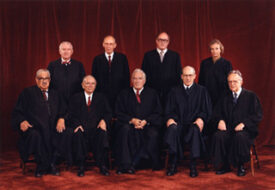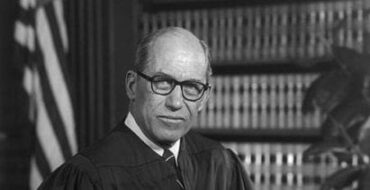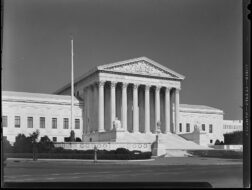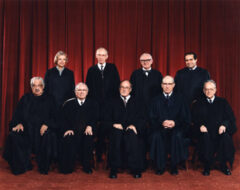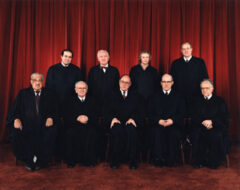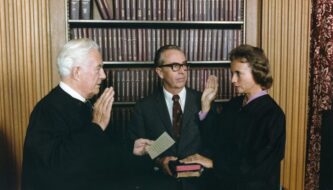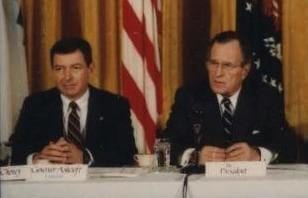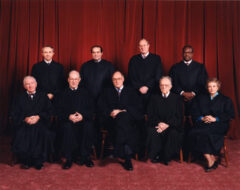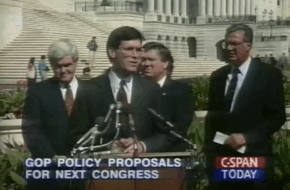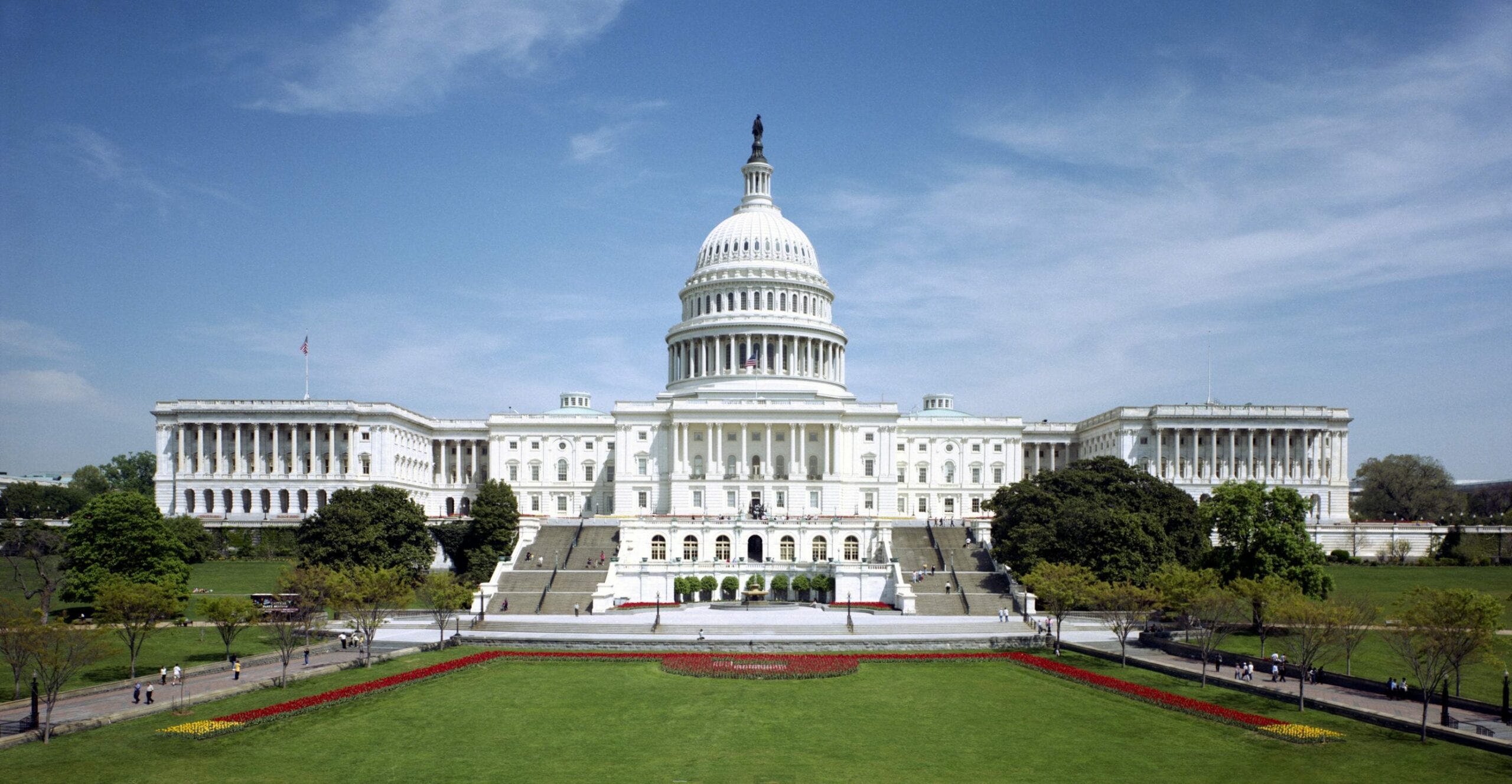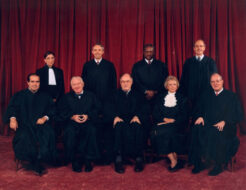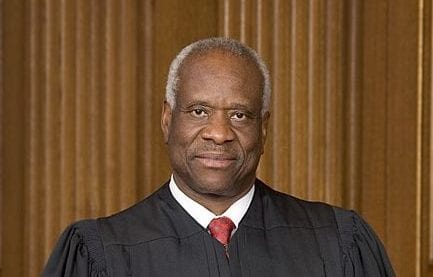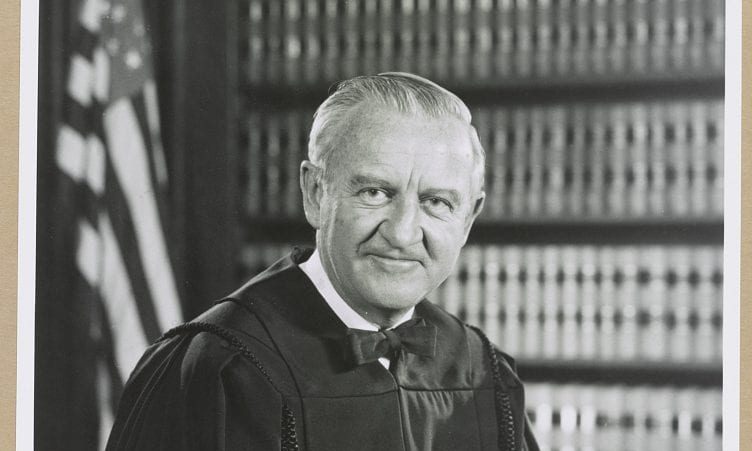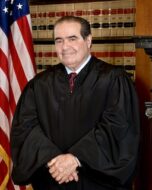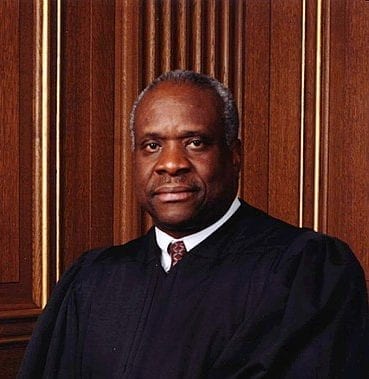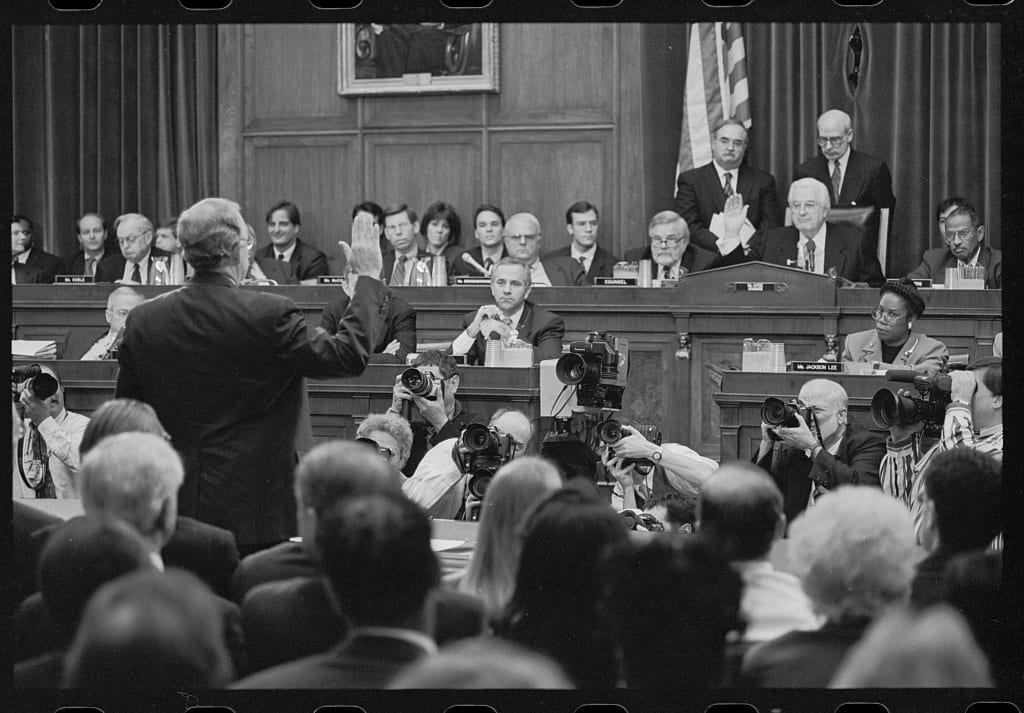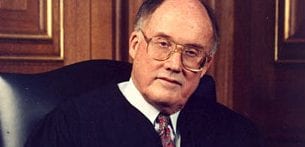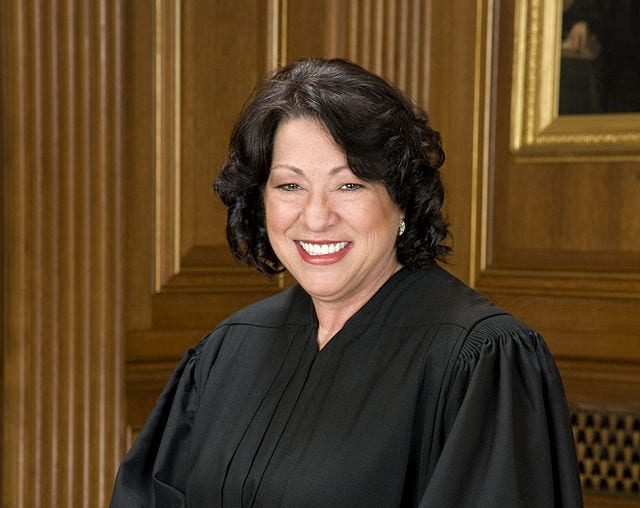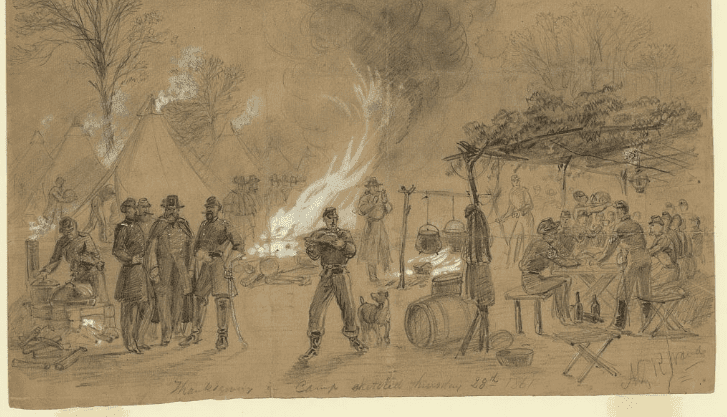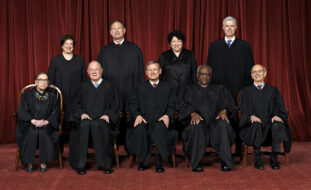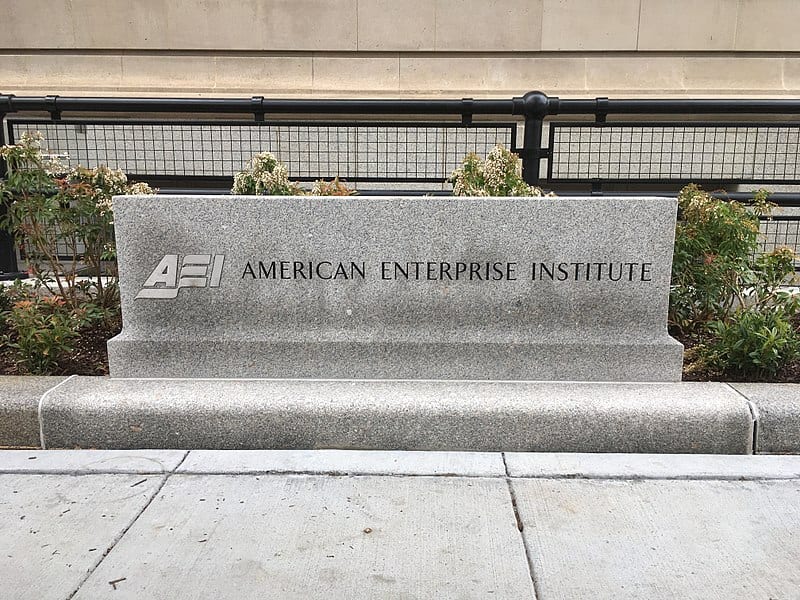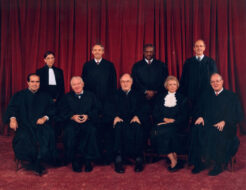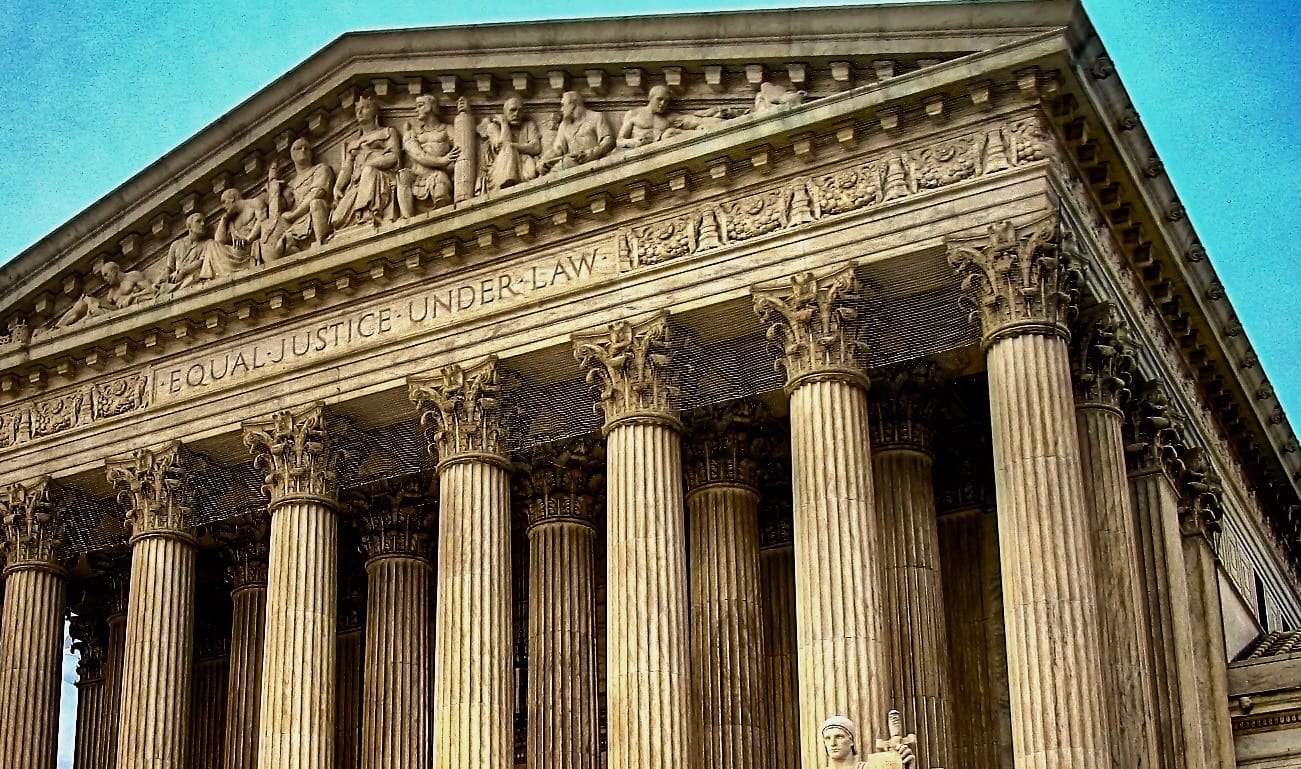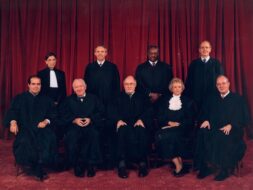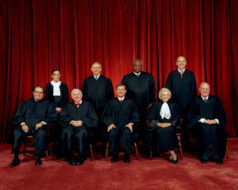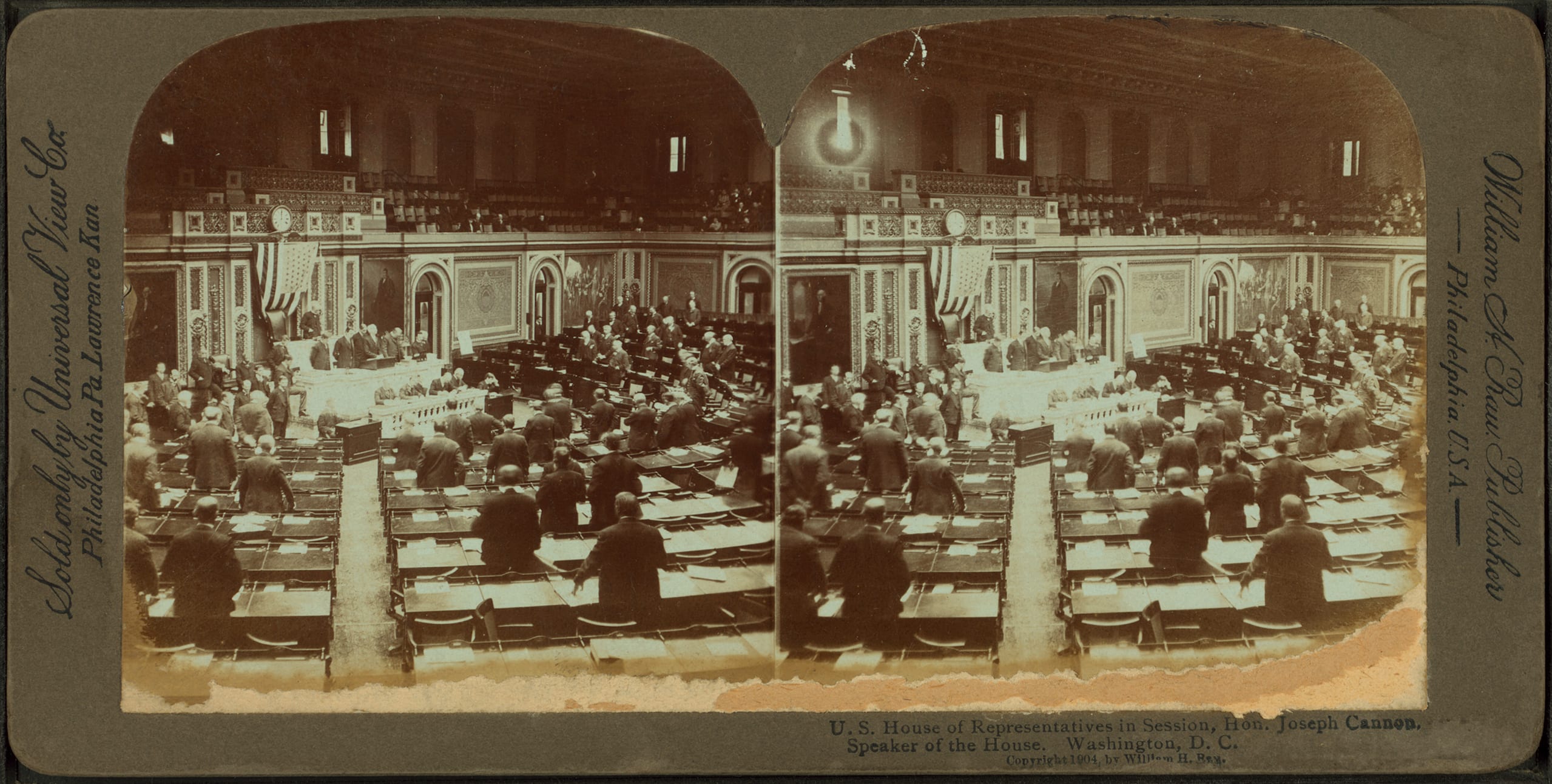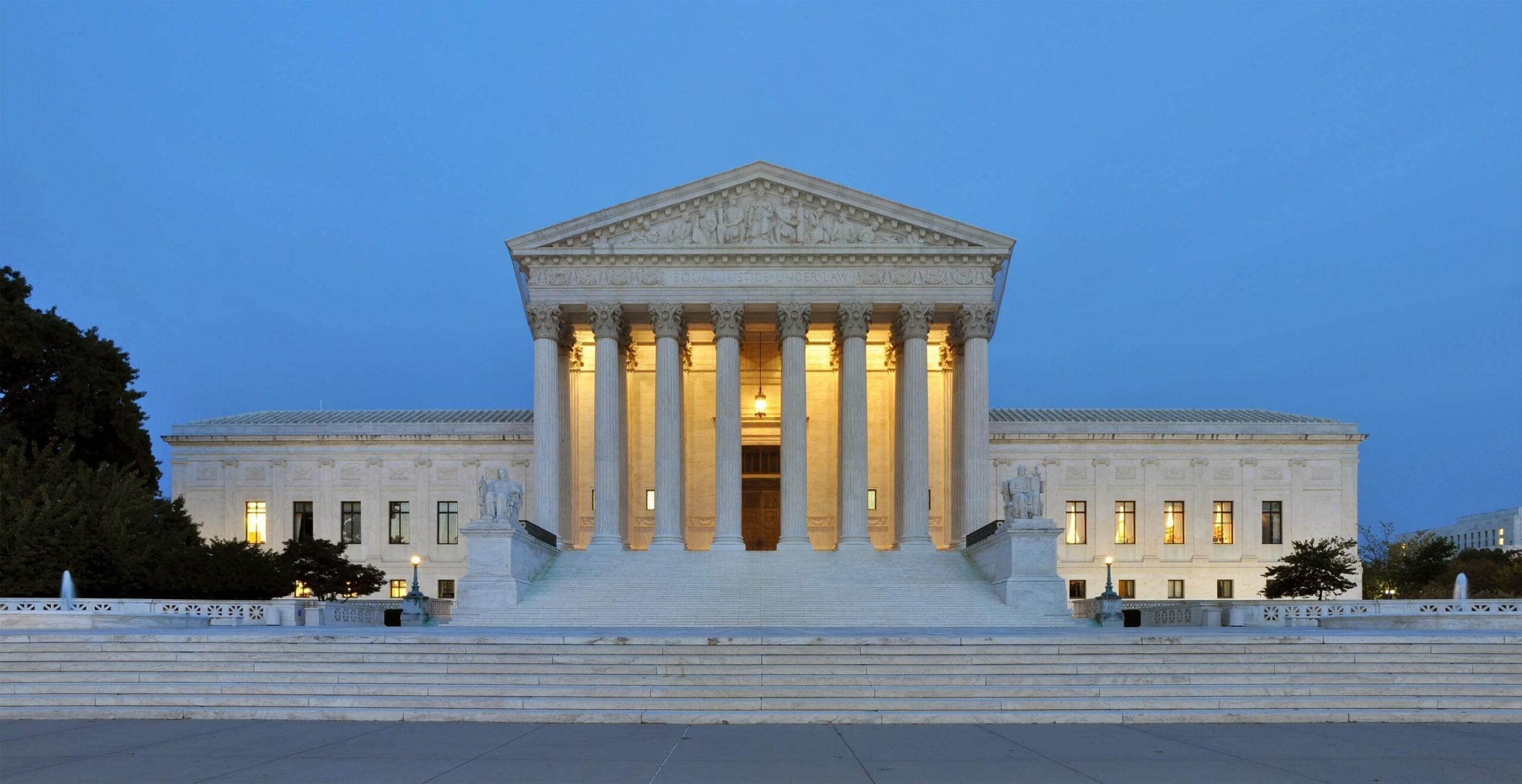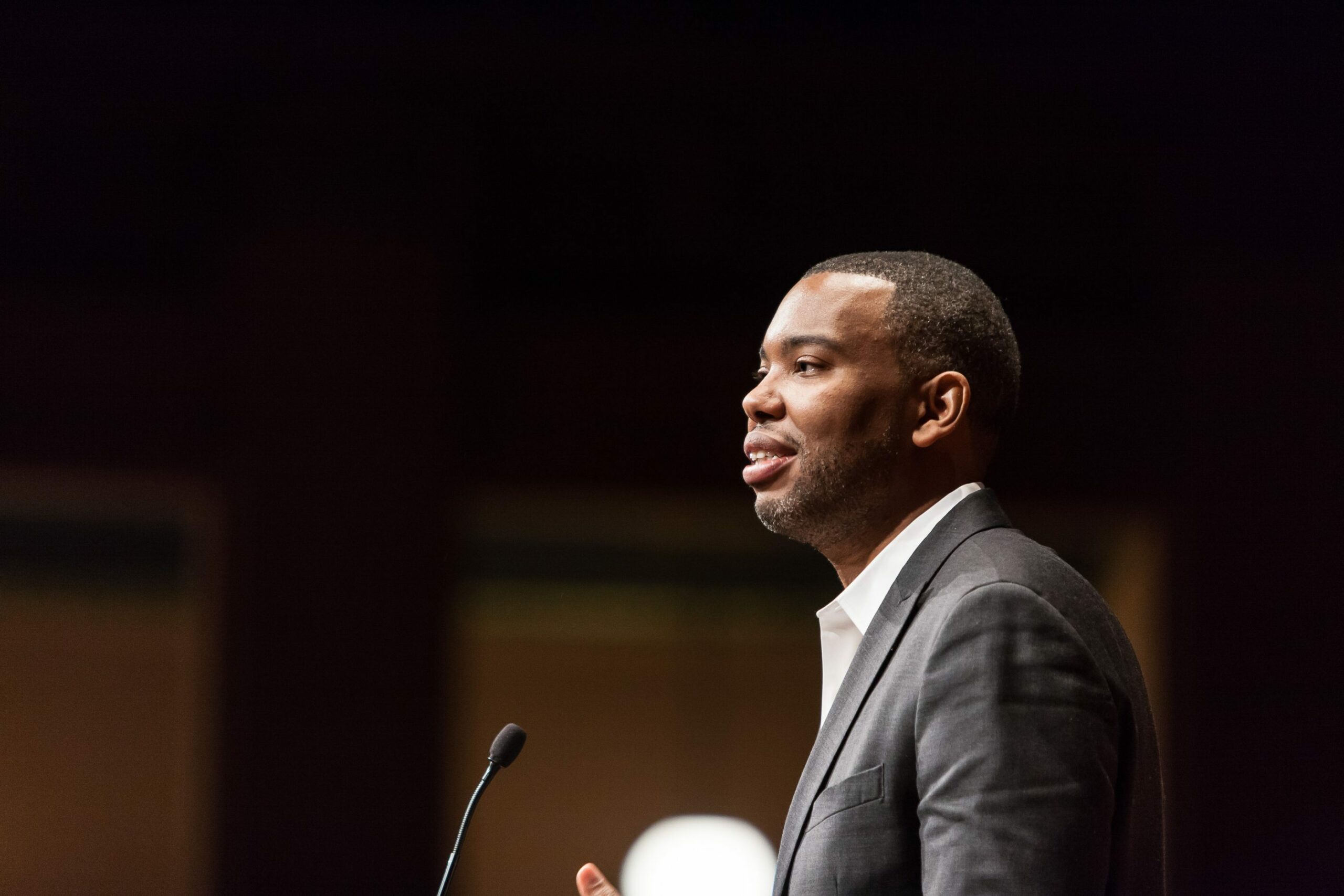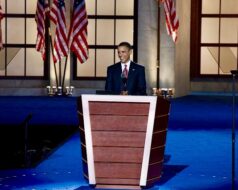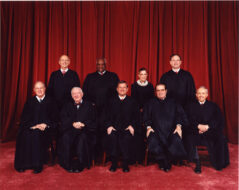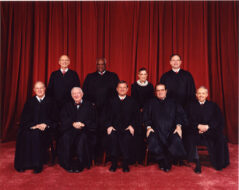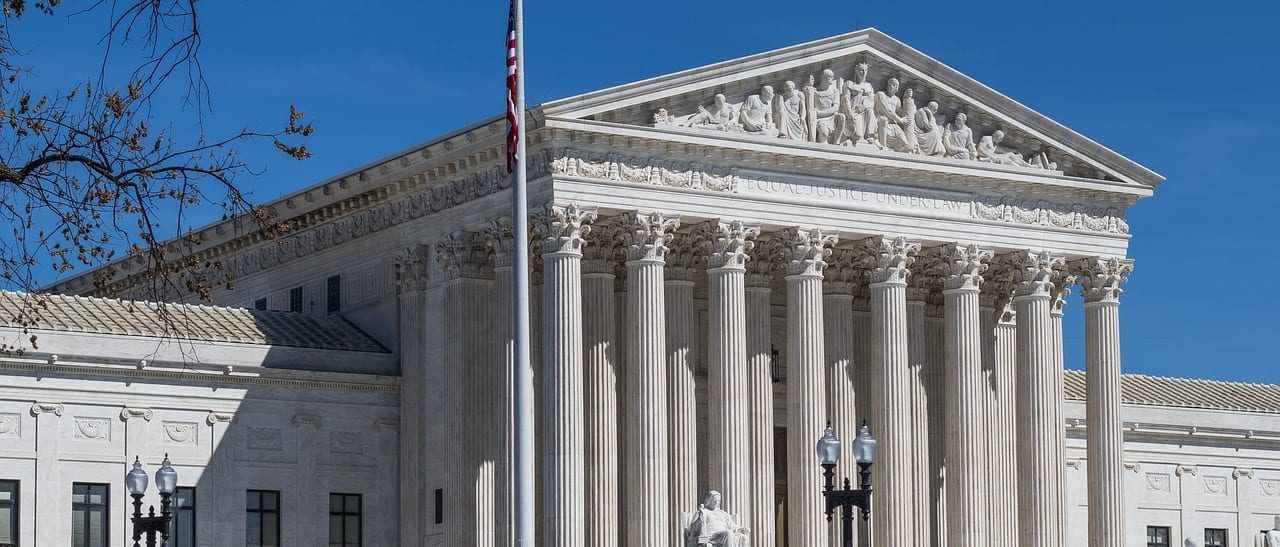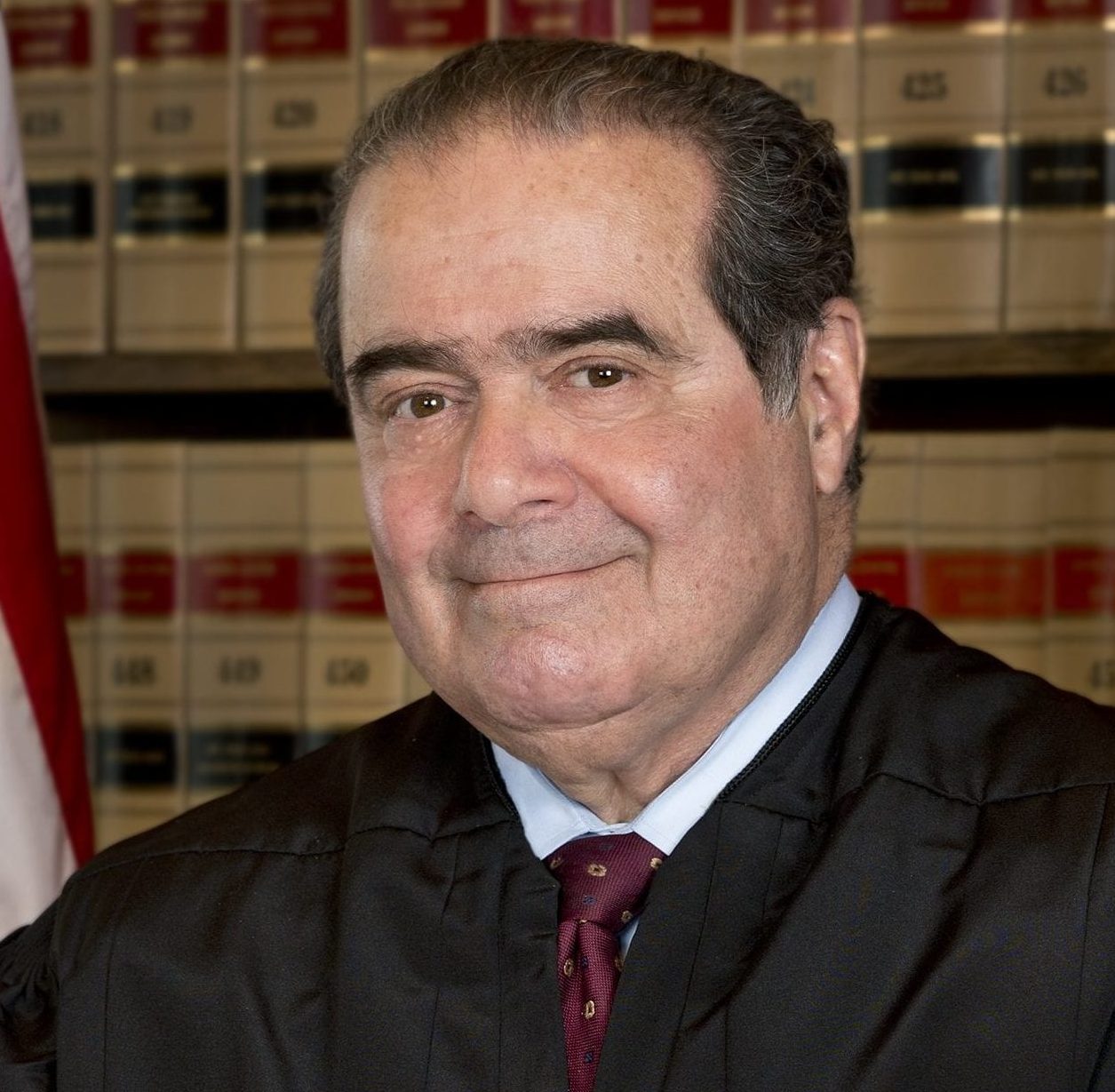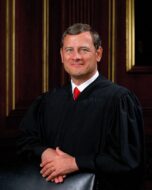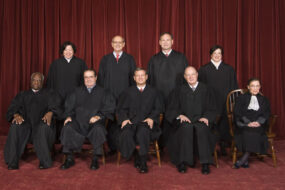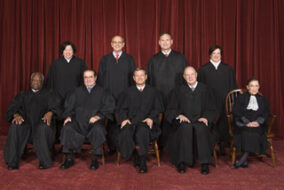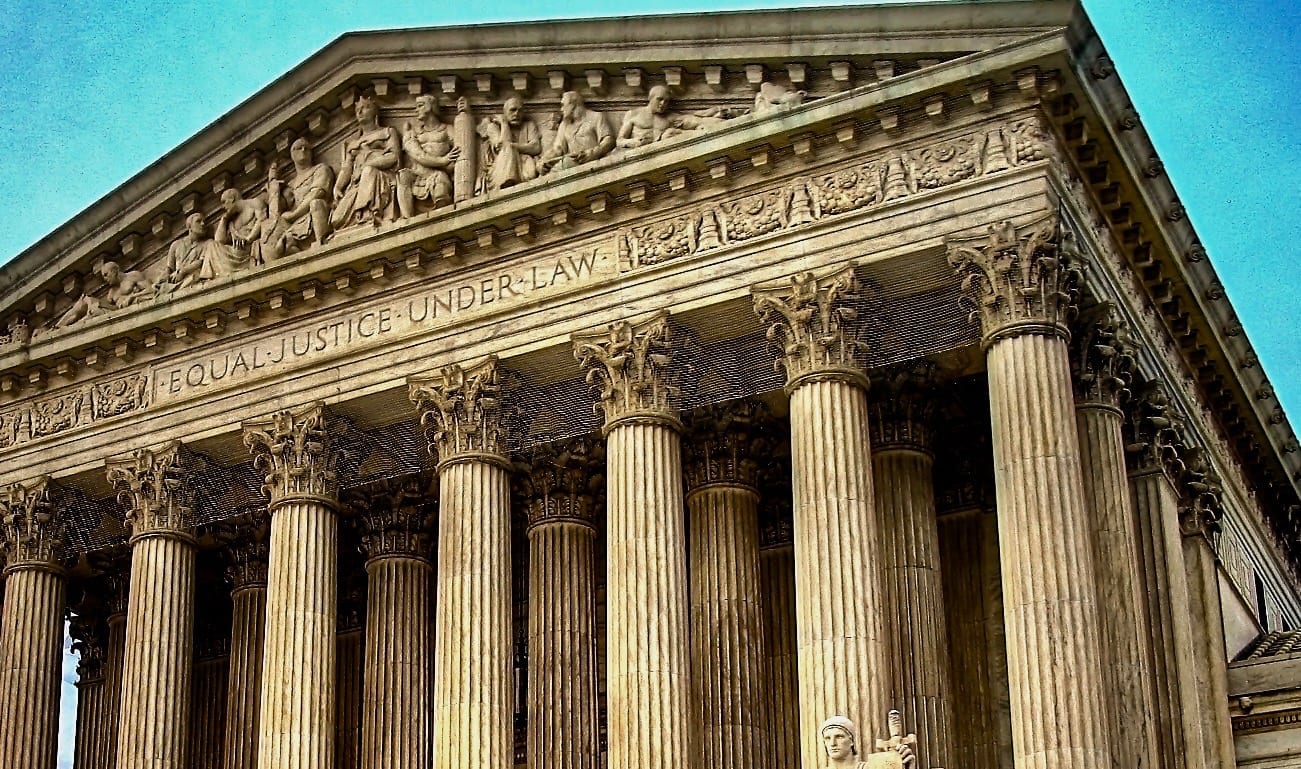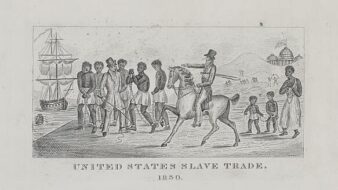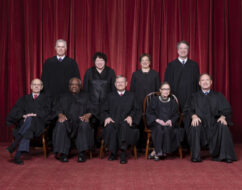
No related resources
Introduction
Clarence Thomas (1948–) was nominated to replace the nation’s first African American justice, Thurgood Marshall. Although he began his career as a self-professed black radical, Thomas became one of the most conservative justices on the Court and one of its most committed originalists. A consistent thread throughout his jurisprudence on race is opposition to racial preferences or any assumption of racial inferiority.
Missouri v. Jenkins is, so far, the Supreme Court’s last statement on desegregation and serves as the bookend to Brown v. Board of Education (1954). In the case, the federal trial court had ordered billions of dollars of improvements to the Kansas City, Missouri, School District (KCMSD) in order to improve the quality of education for the existing district students and to attract white students from the suburbs to KCMSD schools. These improvements proved controversial in Kansas City. A group of African-American parents formed a coalition opposed to the plan, saying it placed too much emphasis on what suburban white students might need or find attractive and assumed that black students needed white students in order to succeed. This coalition eventually won control of the school board.
In the Court’s majority opinion, Chief Justice Rehnquist overturned substantial components of the district court’s remedial order. In his concurring opinion, Justice Thomas criticized both the underlying assumptions of the remedial plan, which he contended were grounded in a belief in black inferiority, and the expansive authority exercised by the Court in implementing it. Pointing back to the debate between Brutus and Hamilton, he contended that such exercises of power exceed the judiciary’s proper role.
Source: 515 U.S. 70 (1995), https://www.law.cornell.edu/supct/html/93-1823.ZC1.html.
It never ceases to amaze me that the courts are so willing to assume that anything that is predominantly black must be inferior. Instead of focusing on remedying the harm done to those black schoolchildren injured by segregation, the district court here sought to convert the Kansas City, Missouri, School District (KCMSD) into a “magnet district” that would reverse the “white flight” caused by desegregation. In this respect, I join the Court’s decision concerning the two remedial issues presented for review. I write separately, however, to add a few thoughts with respect to the overall course of this litigation. In order to evaluate the scope of the remedy, we must understand the scope of the constitutional violation and the nature of the remedial powers of the federal courts.
Two threads in our jurisprudence have produced this unfortunate situation, in which a district court has taken it upon itself to experiment with the education of the KCMSD’s black youth. First, the court has read our cases to support the theory that black students suffer an unspecified psychological harm from segregation that retards their mental and educational development. This approach not only relies upon questionable social science research rather than constitutional principle, but it also rests on an assumption of black inferiority. Second, we have permitted the federal courts to exercise virtually unlimited equitable powers1 to remedy this alleged constitutional violation. The exercise of this authority has trampled upon principles of federalism and the separation of powers and has freed courts to pursue other agendas unrelated to the narrow purpose of precisely remedying a constitutional harm. . . .
Without a basis in any real finding of intentional government action, the district court’s imposition of liability upon the state of Missouri improperly rests upon a theory that racial imbalances are unconstitutional. . . .In effect, the court found that racial imbalances constituted an ongoing constitutional violation that continued to inflict harm on black students. This position appears to rest upon the idea that any school that is black is inferior, and that blacks cannot succeed without the benefit of the company of whites.
The district court’s willingness to adopt such stereotypes stemmed from a misreading of our earliest school desegregation case. In Brown v. Board of Education (Brown I), the Court noted several psychological and sociological studies purporting to show that de jure segregation harmed black students by generating “a feeling of inferiority” in them. Seizing upon this passage in Brown I, the district court asserted that “forced segregation ruins attitudes and is inherently unequal.” The district court suggested that this inequality
continues in full force even after the end of de jure segregation. . . .
The district court’s unwarranted focus on the psychological harm to blacks and on racial imbalances has been only half of the tale. Not only did the court subscribe to a theory of injury that was predicated on black inferiority, it also married this concept of liability to our expansive approach to remedial powers. We have given the federal courts the freedom to use any measure necessary to reverse problems—such as racial isolation or low educational achievement—that have proven stubbornly resistant to government policies. We have not permitted constitutional principles such as federalism or the separation of powers to stand in the way of our drive to reform the schools. Thus, the district court here ordered massive expenditures by local and state authorities, without congressional or executive authorization and without any indication that such measures would attract whites back to KCMSD or raise KCMSD test scores. The time has come for us to put the genie back in the bottle. . . .
. . . Suspicion of judicial discretion led to criticism of Article III during the ratification of the Constitution. Anti-Federalists attacked the Constitution’s extension of the federal judicial power to “cases, in law and equity,” arising under the Constitution and federal statutes. According to the Anti-Federalists, the reference to equity granted federal judges excessive discretion to deviate from the requirements of the law. Said the “Federal Farmer,” “by thus joining the word equity with the word law, if we mean anything, we seem to mean to give the judge a discretionary power.” He hoped that the Constitution’s mention of equity jurisdiction was not “intended to lodge an arbitrary power or discretion in the judges, to decide as their conscience, their opinions, their caprice, or their politics might dictate.” Another Anti-Federalist, Brutus, argued that the equity power would allow federal courts to “explain the Constitution according to the reasoning spirit of it, without being confined to the words or letter.”2 This, predicted Brutus, would result in the growth of federal power and the “entire subversion of the legislative, executive, and judicial powers of the individual states.”
These criticisms provoked a Federalist response that explained the meaning of Article III’s words. Answering the Anti-Federalist challenge in the Federalist Papers, Alexander Hamilton described the narrow role that the federal judicial power would play. Initially, Hamilton conceded that the federal courts would have some freedom in interpreting the laws and that federal judges would have lifetime tenure.3 Nonetheless, Hamilton argued (as Blackstone4 had in describing the English equity courts) that rules and established practices would limit and control the judicial power: “To avoid an arbitrary discretion in the courts, it is indispensable that they should be bound down by strict rules and precedents, which serve to define and point out their duty in every particular case that comes before them.” Hamilton emphasized that “[t]he great and primary use of a court of equity is to give relief in extraordinary cases,” and that “the principles by which that relief is governed are now reduced to a regular system.”5
In response to Anti-Federalist concerns that equity would permit federal judges an unchecked discretion, Hamilton explicitly relied upon the precise nature of the equity system that prevailed in England and had been transplanted in America. Equity jurisdiction was necessary, Hamilton argued, because litigation “between individuals” often would contain claims of “fraud, accident, trust or hardship, which would render the matter an object of equitable, rather than of legal jurisdiction.” “In such cases,” Hamilton concluded, “where foreigners were concerned on either side, it would be impossible for the federal judicatories to do justice without an equitable, as well as a legal jurisdiction.”6 Thus, Hamilton sought to narrow the expansive Anti-Federalist reading of inherent judicial equity power by demonstrating that the defined nature of the English and colonial equity system—with its specified claims and remedies—would continue to exist under the federal judiciary. In line with the prevailing understanding of equity at the time, Hamilton described Article III “equity” as a jurisdiction over certain types of cases rather than as a broad remedial power. Hamilton merely repeated the well-known principle that equity would be controlled no less by rules and practices than was the common law. . . .
Even if segregation were present, we must remember that a deserving end does not justify all possible means. The desire to reform a school district, or any other institution, cannot so captivate the judiciary that it forgets its constitutionally mandated role. Usurpation of the traditionally local control over education not only takes the judiciary beyond its proper sphere, it also deprives the states and their elected officials of their constitutional powers. At some point, we must recognize that the judiciary is not omniscient, and that all problems do not require a remedy of constitutional proportions.
- 1. The power of the courts to remedy the harm done by unlawful action.
- 2. Justice Thomas’ note: Brutus No. 11, January 31, 1788.
- 3. Federalist 78.
- 4. William Blackstone (1723–1780) wrote a commentary on English laws widely read at the time of the American founding.
- 5. Justice Thomas’ note: Federalist 83.
- 6. Justice Thomas’ note: Federalist 80.
State of the Union Address (1996)
January 23, 1996
Conversation-based seminars for collegial PD, one-day and multi-day seminars, graduate credit seminars (MA degree), online and in-person.





